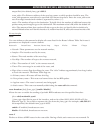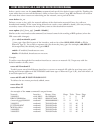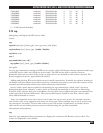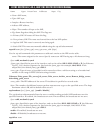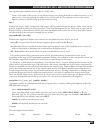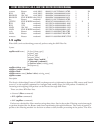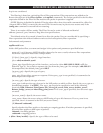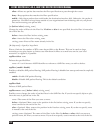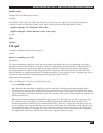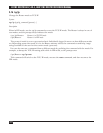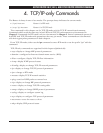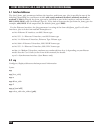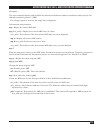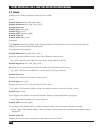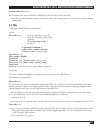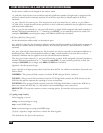
ASYNC ROUTER AR-P, AR-5, AND SYNC ROUTER REFERENCE MANUAL
211
sapfilter status
Displays the list of SAP packet filters.
Example
Add a filter called “sap1” to allow only file server services (service type 4) received from eth0 to be
routed. Create a second filter called “sap2” which denies all other inbound packets. Enter:
sapfilter add sap1 -s 4 -f inbound -i eth0 -t allow
sapfilter add sap2 -i eth0 -f inbound -t deny -o after sap1
See also
filter
ripfilter
3.15 spoof
Configure/display which packets to spoof
Syntax
spoof iface watchdog [{on | off}]
Description
The spoof command configures which packets to spoof. Spoofing is the act of responding to periodic
packets received on the Ethernet interface while a corresponding modem interface is disconnected. If
the Router allowed the packets through, the modem interface would never disconnect. Spoofing is
usually performed for packets that are periodically sent between the local and remote networks. The
Router default is to enable spoofing for all modem interfaces. Any interface (line) configured for client
operation will automatically have the spoof watchdog off for that interface.
Subcommands and parameters
Only “non-Ethernet” interfaces are allowed for iface.
iface—modem0-4, sync0
on—Specifies that spoofing is enabled for a given interface. Enabling watchdog spoofing allows
remote users to not lose their NetWare server connection at the other end of the modem link, when
the modem line disconnects. If the modem disconnects, the user can simply access the server volume
again, the modem will redial, and the session will continue, after a 30- to 60-second delay to make the
modem connection.
off—Specifies that spoofing is disabled for a given interface. If neither on nor off is specified, then
the current state of spoofing is returned. If watchdog spoofing is disabled, then each time the
modem disconnects (usually due to an idle modem line), the user’s connection will time out at the
server. NetWare servers generally time out lost user connections after 10 minutes, although this time
is configurable. After the timeout, the server closes the user’s files and logs the user out. If the user
accesses the NetWare server again, the user’s machine will hang, an error message will be displayed,
the application may abort, and the user will have to log back onto the server.



